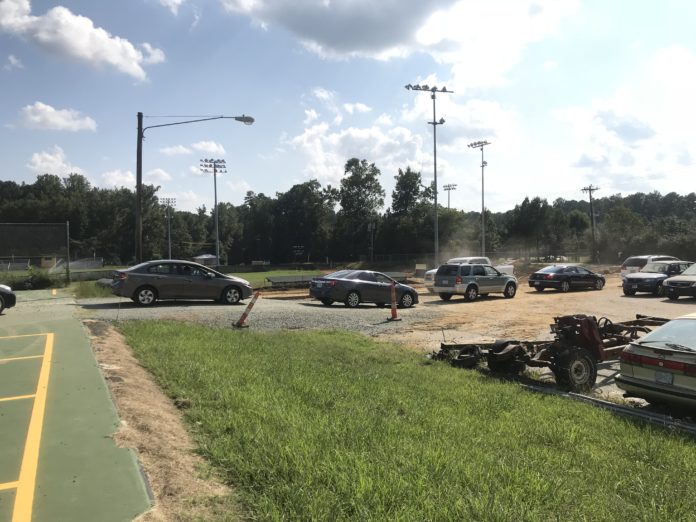
Construction at Chapel Hill that began this summer and will continue for the next two years has caused limited access to student parking following the destruction of the old junior parking lot, leaving campus with only three lots, as opposed to the four available in previous years.
The restricted parking access has had the greatest impact on the junior class. In August, juniors who were interested in buying a parking space were required to fill out an application prior to receiving a space, though seniors were allowed to pay 100 dollars and receive a space without applying.
“I feel like the issues with construction that would restrict parking should have been thought out more during the summer,” junior Ellie Riggsbee, who does not have a spot, said.
Sophomores will have no access to parking spaces on campus during the 2018-19 school year, though in previous years they were allowed to purchase spaces during the second semester.
Administration placed the current junior parking spots on the tennis court behind the bus circle. With this change, buses, faculty and juniors now all use the same entrance and exit.
Junior Harper Wilkinson immediately noticed heightened traffic in the congested areas of the parking lot and the bus circle on the first day of school.
“It’s almost impossible for me to back out of my space without hitting someone,” Wilkinson said. “Now I’m having to wait 15 to 20 minutes before I can even leave my spot.”
High demand in the senior lot also led to student spots opening in the expanded staff parking lot near the C building.
Senior Lindsey Birkemo applied for a spot late and now parks in the staff lot.
“It’s kind of scary seeing all the teachers there,” Birkemo said. “Now there’s even more pressure to be a good driver.”
In an email to parents and students sent out two days before the start of the year, principal Charles Blanchard acknowledged that afternoon dismissal from the junior lot would take “a few extra moments” and thanked readers in advance as students, faculty members and bus drivers “get used to our new traffic patterns.”











